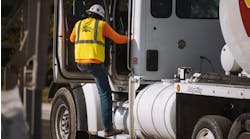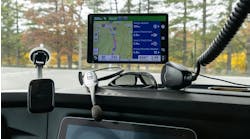A recent report compiled by the North American Council for Freight Efficiency (NACFE) and Cascade Sierra Solutions (CSS) on behalf of the International Council for Clean Transportation(ICCT) determined that five major “hurdles” are preventing many heavy-duty fleets from adopting a wide range of fuel efficiency technologies: hurdles that include lack of access to capital and uncertainty regarding payback calculations.
“The report clearly shows the gap between perceptions and reality of the adoption of technologies,” noted Mike Roeth, NACFE’s executive director. “If implemented, currently available trucking technologies could earn fuel savings of as much as $20,000 per truck with a payback time of less than 18 to 24 months.”
The five main hurdles identified in the report are: payback time and high initial cost of trucks; lack of access to capital; lack of credible information; insufficient reliability; and unavailability of technology.
Yet Roeth told Fleet Owner that lack of credible information on fuel savings is the single biggest barrier preventing fleets from adopting any number of technologies aimed at boost fuel efficiency.
“Most of the big fleets told us that if they get credible information detailing real-world fuel savings for a particular technology, then they usually can easily find the money to invest in it,” he explained. To his mind, credible information for payback analysis is the “main domino” that causes all the other barriers to fall away.
On the flip side, Roeth believes determining that a lack of “credible information” is the main hold up for adoption by many fleets is a major benefit, because it’s “a relatively easy problem to solve” via better constructed testing.
“One of the things we’ve found is that many technology providers will do a test with one fleet and believe that fleet’s operation is representative of the entire industry,” he pointed out. “So better research means looking more closely at all the different applications within the trucking business so such systems get placed in the right truck duty-cycle for maximum return.”


